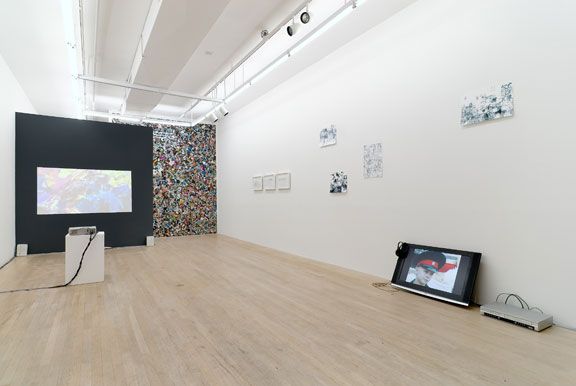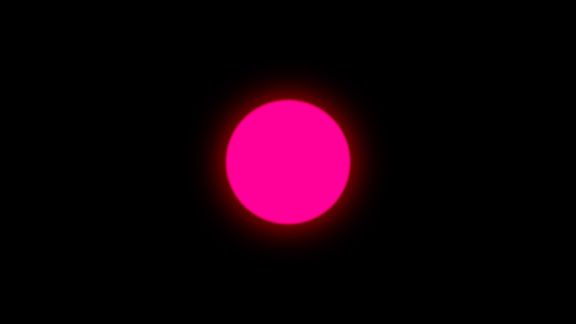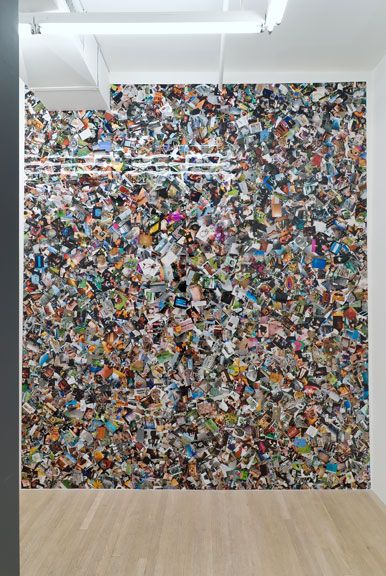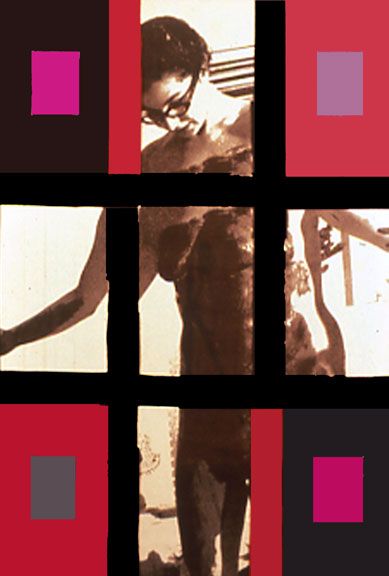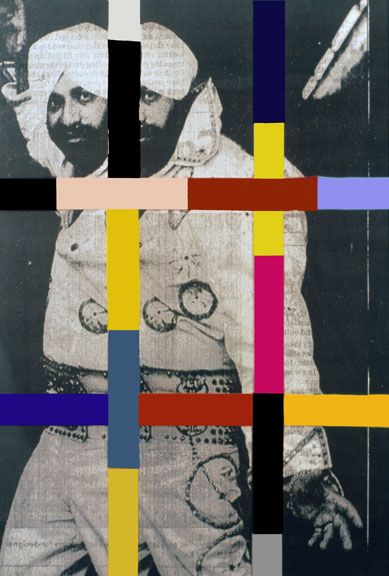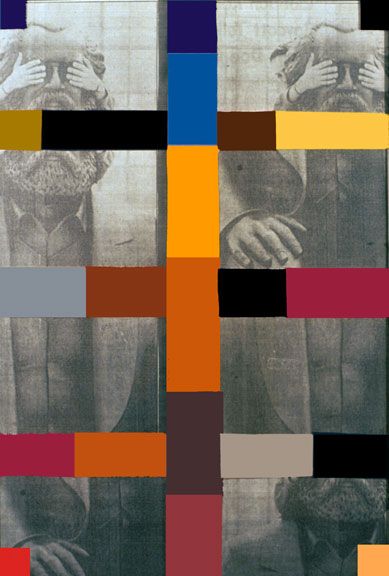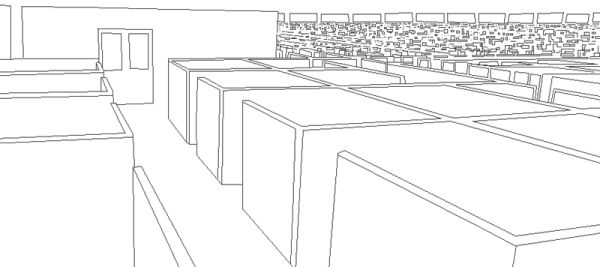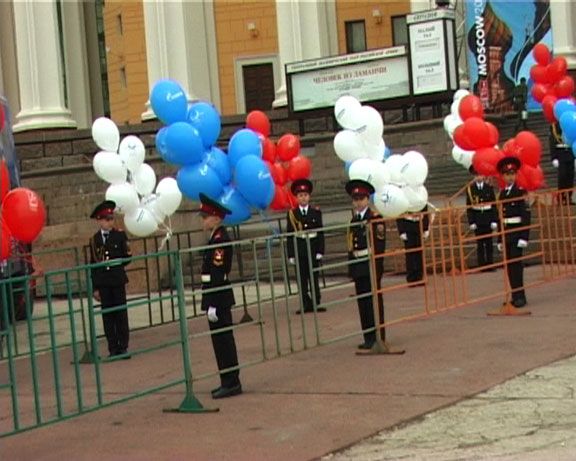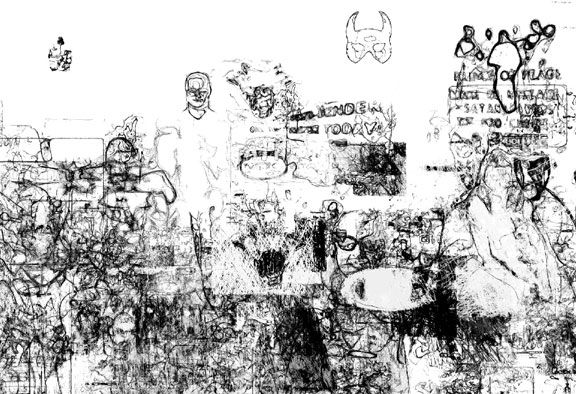OLGA CHERNYSHEVA
TONY LABAT
TAKESHI MURATA
SIEBREN VERSTEEG 12 July 2007 - 10 August 2007
Foxy Production presents SOLAR SET, a group exhibition featuring works by Michael Bell-Smith, Olga Chernysheva, Tony Labat, Takeshi Murata, and Siebren Versteeg. Solar Set refers to a box work by Joseph Cornell from 1958, where the artist collected and arranged solar statistics, spherical objects, and images of the sun, among other elements, to create an idiosyncratic universe in miniature. The exhibition explores the ways in which images, objects or events are collected and reconfigured within conceptually rich and critically resonant visual systems. Using diverse means, the works take popular cultural forms as their starting point to forge imaginative connections, evocative images, and unexpected metaphors.
Michael Bell-Smith mixes original and appropriated imagery to produce iconographic, conceptual videos, installations, and prints. For Solar Set, he presents digitally rendered line tracings from the film Tron (1982), known for its break-through blend of live action and computer generated imagery. Depicting a cityscape, cyberspace, and workplace cubicles, he investigates the representation of space and perspective through a reinterpretation of virtual locations.
Olga Chernysheva’s films and photographs wryly scrutinize the post-Soviet experience. Her video March (2005) observes the pomp and absurdity of a military style celebration that includes boy guards, cheerleading pom-pom girls, and assorted local dignitaries in a searing and at times hilarious exposé of the ornamentation of power. It is Chernysheva’s almost seamless mediation of the events recorded that gives the work its subversive power.
Tony Labat’s diverse practice, including video, painting, installation, sculpture and performance, repurposes cultural artifacts to produce provocative statements about contemporary experience. His Frankenstein Series (2007) comprises digital prints on canvas of earlier works that were constructed from found photographs. His remastered images of a Sikh Elvis, a comical Karl Marx, and an Yves Klein model, with their layering of appropriation upon appropriation, astutely examine the process of image production.
Takeshi Murata’s videos push definitions of figuration and abstraction to the limits. Using the digital pixel as his building block, he dissolves and re-constructs found film footage to produce compelling, almost sculptural moving images. His Untitled (Pink Dot) (2007) reconfigures ultra-violent action movie footage: at times he seems to aestheticize the violence with rhapsodic flowing fluorescent colors, while at others he creates a deep sense of foreboding with dark, leaden movements and a convulsive, blinking pink dot.
Siebren Versteeg explores visual processes: he reprograms popular software, corporate design, and internet functionality with dynamic, often intricate results. For Solar Set, he has produced a site-specific wall montage of images randomly downloaded from Flicker, the online photo-library. This digital collage is itself constructed from hundreds of small photographs assembled like a huge jigsaw puzzle. He also presents a series of black and white prints, generated from the results of a Google image search of the word “Satan” that have been fed into a drawing program.
MICHAEL BELL-SMITH (East Corinth, ME, 1978) lives and works in Philadelphia. He holds a BA in Semiotics from Brown University, Providence, RI. Selected exhibitions include: Hirshhorn Museum, DC (2008); Krannert Art Museum – University of Illinois, IL (2008); MoMA, New York (screening) (2007); Roslyn Oxley9 Gallery, Sydney (solo) (2007); LISTE, Basel, Switzerland (solo) (2007); Galeri F15, Moss, Norway (2007); Threshold Artspace, Perth, Scotland (2007); Dallas Center for Contemporary Art, TX (2007); The Museum of Fine Arts in Lausanne, Switzerland (screening) (2006); And/Or Gallery, Dallas, TX (two person) (2006); Vilma Gold, London (2006); Foxy Production, New York (solo) (2006); BankART, Yokohama, Japan (2006); RX Gallery, San Francisco, CA (2006); Glassbox, Paris (2006); PROJEKT 0047, Berlin (2005); Tate Liverpool, Liverpool, UK (2005).
OLGA CHERNYSHEVA (Moscow, 1962) lives and works in Moscow. She holds a BA from the Moscow Cinema Academy, Moscow and an MA from the Rijksakademie Van Beeldende Kunsten, Amsterdam. Selected exhibitions include: Galerie Catherine Bastide, Brussels (solo) (2007); Foxy Production, New York (solo) (2007); Moscow Biennale for Contemporary Art (2007); Stella Art Gallery/Foundation, Moscow (solo) (2006 & 2005); Biennale of Sydney (2006); Museum Folkwang, Essen, and Hamburger Kunsthalle, Hamburg (2006); Salzburger Kunstverein, Salzburg (2006); Moscow Multimedia Center for Contemporary Arts, Moscow (solo) (2005); White Space Gallery, London (solo) (2005); Solomon R Guggenheim Museum, New York (2005); The State Russian Museum, Saint-Petersburg, Russia (solo) (2004); State Historical Museum, Moscow (2004); National Museum of Contemporary Art, Oslo (2004); Museum of Contemporary Art, Zagreb (2004); Russian Pavilion, 49th International Art Exhibition, Venice Biennale (2001); Kunstlerhaus Vienna, Austria (2001).
TONY LABAT (Havana, Cuba, 1951) lives and works in San Francisco. He received both a B.F.A. and an M.F.A. from the San Francisco Art Institute. His works are in the permanent collections of the Centre Georges Pompidou, Paris; Kunstmuseum, Bern; Stedelijk Museum, Amsterdam; and the Long Beach Museum of Art, California. Recent exhibitions include: Harris Lieberman, New york (2007); International Biennial of Contemporary Art of Seville, Spain, curated by Okwui Enwezor (2006-07); New Langton Arts in San Francisco (2005). He has also exhibited at MoCA, Los Angeles; MoMA, New York; and SFMOMA, San Francisco.
TAKESHI MURATA (Chicago, 1974) lives and works in upstate New York. He graduated from the Rhode Island School of Design in 1997 with a B.F.A. Murata’s work has screened at MoMA, New York (2007), and he has exhibited at Gallery Sora, Tokyo (solo) (2007); The Reliance, London (solo) (2007); Hirshhorn Museum, Washington DC (2007); Ratio 3, San Francisco (solo) (2006); Gladstone Gallery, New York (2006); Yerba Buena Center for the Arts, San Francisco (2006); Vilma Gold, London (2006); Taka Ishii Gallery, Tokyo (2006); Smack Mellon, Brooklyn (2005), Deitch Projects, New York (2005); Peres Projects, Los Angeles (2004); Gavin Brown’s Enterprise, New York (2004); FACT Centre, Liverpool, UK (2004); the Contemporary Arts Center, Cincinnati (2004).
SIEBREN VERSTEEG (New Haven, CT, 1971) lives and works in New York City. He holds a BFA from the School of the Art Institute, Chicago (1996); and an MFA from the University of Illinois at Chicago (2004). Solo projects and exhibitions include: Nothing Was, Max Protetch, New York, NY (2007); Untitled Film II, Bellwether, New York, NY (2006); determination, Rhona Hoffman Gallery, Chicago, IL (2005); Siebren Versteeg, University Galleries Normal, IL (2005); Ulrich Museum of Art History and Being Here, Wichita, KS (2004); CC and Dynamic Ribbon Device, Wexner Center for the Arts, Columbus, OH (2004); 12×12, Museum of Contemporary Art, Chicago, IL (2003); CC, Ten In One Gallery, New York, NY, (2003).

